Back in February, as a way of celebrating Valentine’s Day through the lens of Commander, I looked at different legendary creatures I wish could have the partner mechanic as we had seen it in Battlebond. As I looked back on the article, many of the pairings could have easily spawned their own article; but it was the combination of Raff Capashen, Ship’s Mage and Reki, the History of Kamigawa that really piqued my interest. There are universally legal ways of building a deck around the historic theme with either general as their own deck or with Jhoira, Weatherlight Captain. But I wanted to evoke the power of the encouraged house rules tied into the philosophy of Commander to create something fun to play against anyone who would allow it.
There is a lot of inherent power in having two generals, whether we’re looking that those Wizards developed for Battlebond or the crazy mix-and-match options given to us in Commander 2016. Because of that, I know that even if the combination of Raff and Reki isn’t fundamentally broken, starting with two generals will be perceived as marginally unfair to a player I might meet in the wild. Luckily, I have several playgroups who are very understanding and often more interested in cool deck ideas than a strict adherence to the rules.
The excitement this idea brought out in me has had me spending the last few months compiling and testing a deck list I was happy with—along with letting War of the Spark get previewed and released to capture the most potentially good cards as I could. I finally wanted to talk about where I landed with this deck, how it fits my play style, and just might be my next long term project to become a permanent deck in my collection.
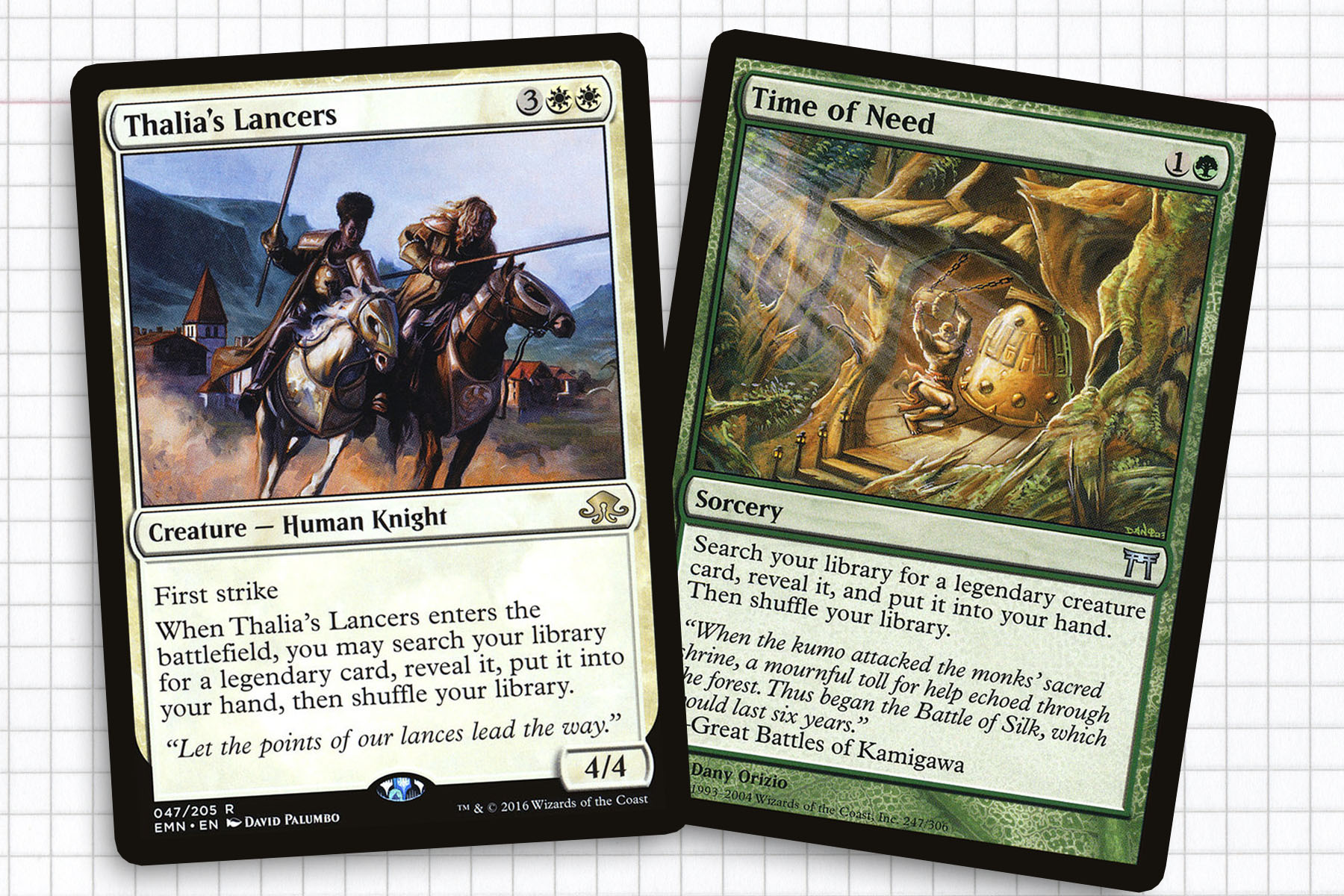
Legendary Matters
Since discovering it, one of the themes I always wanted to build my casual decks around was the legendary subtype. This is part of why I bought into Champions of Kamigawa so hard when it first released. As Commander came into focus, my goals shifted to answering that need in a format better-suited for a legendary matters deck.
Admittedly, I never found Captain Sisay to be compelling. Maybe it was a matter of card pool or perceived power level at the table. Either way, the goal didn’t feel attainable for my playstyle. But looking at my copies of Time of Need and Thalia’s Lancers would get me thinking about my favorite legendary creatures or planeswalkers and hoping for inspiration. As Dominaria introduced the idea of historic cards, I strongly suspected there was finally the pieces to satisfy my needs.
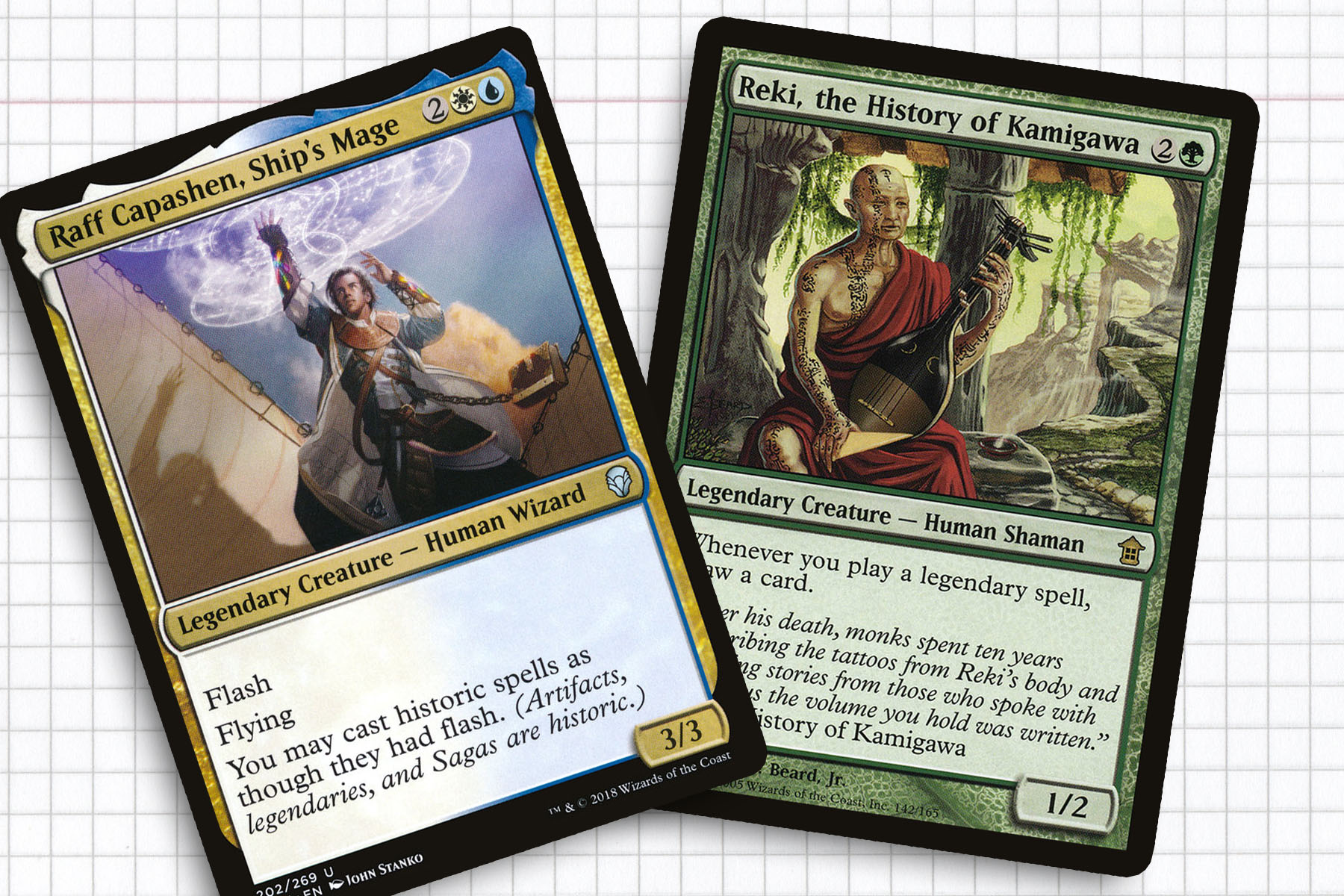
Subverting Deck Construction Advice
The interactions between Raff and Reki are pretty obvious, so when I started brainstorming for this deck I was doing really simple searches for all the legendary permanents and artifacts that were in my color identity. But the deeper I went, the more I had troubles letting go of some of my preconceived notions about Commander deck building. Trying to find the right balance of ramp, card draw, and reactive spells was a bit of a challenge, since I kept looking to my command zone answer some of those needs.
Raff does something that’s welcome, but not essential to gameplay: allowing me to circumvent the timing restrictions on my spells. Reki adds “draw a card” to many of those spells, which frankly covers some bases for me, because I frequently undervalue card draw. But even though this synergy is very potent, I can now say that deck construction proved to be handicapped because I was getting most of my value off of legendary spells, which are traditionally not always as cheap as their non-legendary counterparts. The end result was a deck that I have been happy with in testing, but looks a lot different than many other decks I’ve built in the past. Being able to make use of Jhoira’s Familiar and Artificer’s Assistant to get small edges has worked out great in testing, but also being able to unleash the power of Urza’s Ruinous Blast and Karn’s Temporal Sundering with a high level of reliability has also made piloting this deck very satisfactory.
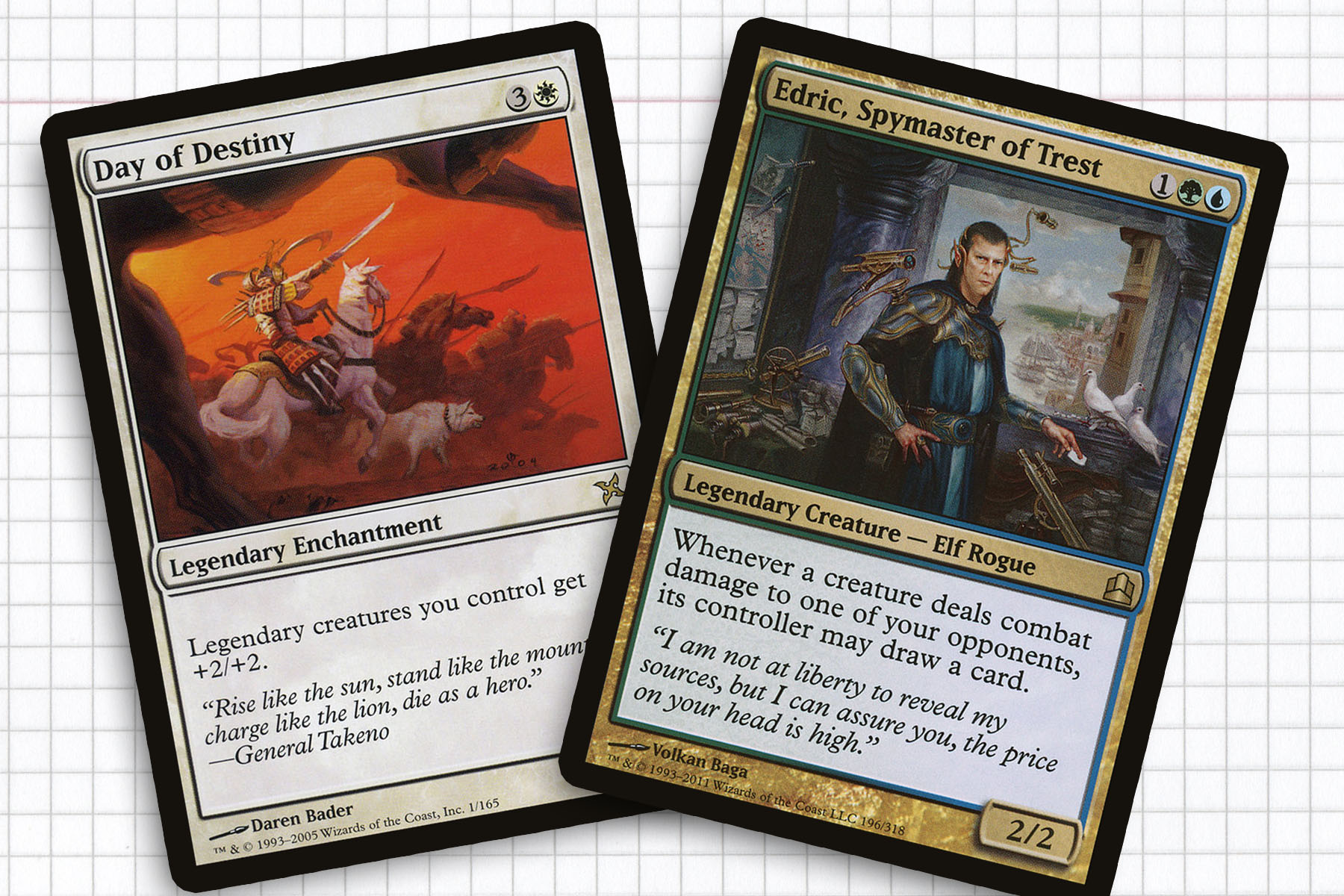
A Focus on Creatures
One of my first conscious decisions when I set out to build this deck was that I didn’t want it to be solely planeswalker-focused. While I hold nothing against a Super Friends deck, I felt that those decks usually start to lean too far into delaying game momentum. Over time I realized I didn’t want this deck to devolve into a super friends style deck. With this in mind and my love of Kamigawa block, my priority was to focus on legendary creatures. This was also the perfect space to take advantage of Heroes’ Podium and Day of Destiny, two cards I have long wanted to use more consistently.
Kami of the Crescent Moon is a Howling Mine that can block in most decks; but here I will likely be casting on an end step, becoming the first player to accrue card advantage off them. Isao, Enlightened Bushi is an admittedly pet card, but for good reason. He is a solid blocker who is often very challenging to remove from the battlefield if I’m playing him right. And I wouldn’t dare dig my heels into legendary-matters strategies without Konda, Lord of Eiganjo. As expensive as he might be, he has won me games over the years by simply being the a creature that survives through most mass removal.
Moving beyond the plane of Kamigawa, I rounded out my other creature slots with Heliod, God of the Sun and Oketra the True as ways of producing chump blockers when I need them. Edric motivates my opponents to fight amongst themselves. As cross-pollination of my major themes, having Djeru, With Eyes Open and Kefnet the Mindful to work as legendary spells that provide planeswalker tutoring and card draw when I need it is a huge boon, while also both being especially helpful for protecting what planeswalkers I will be packing.
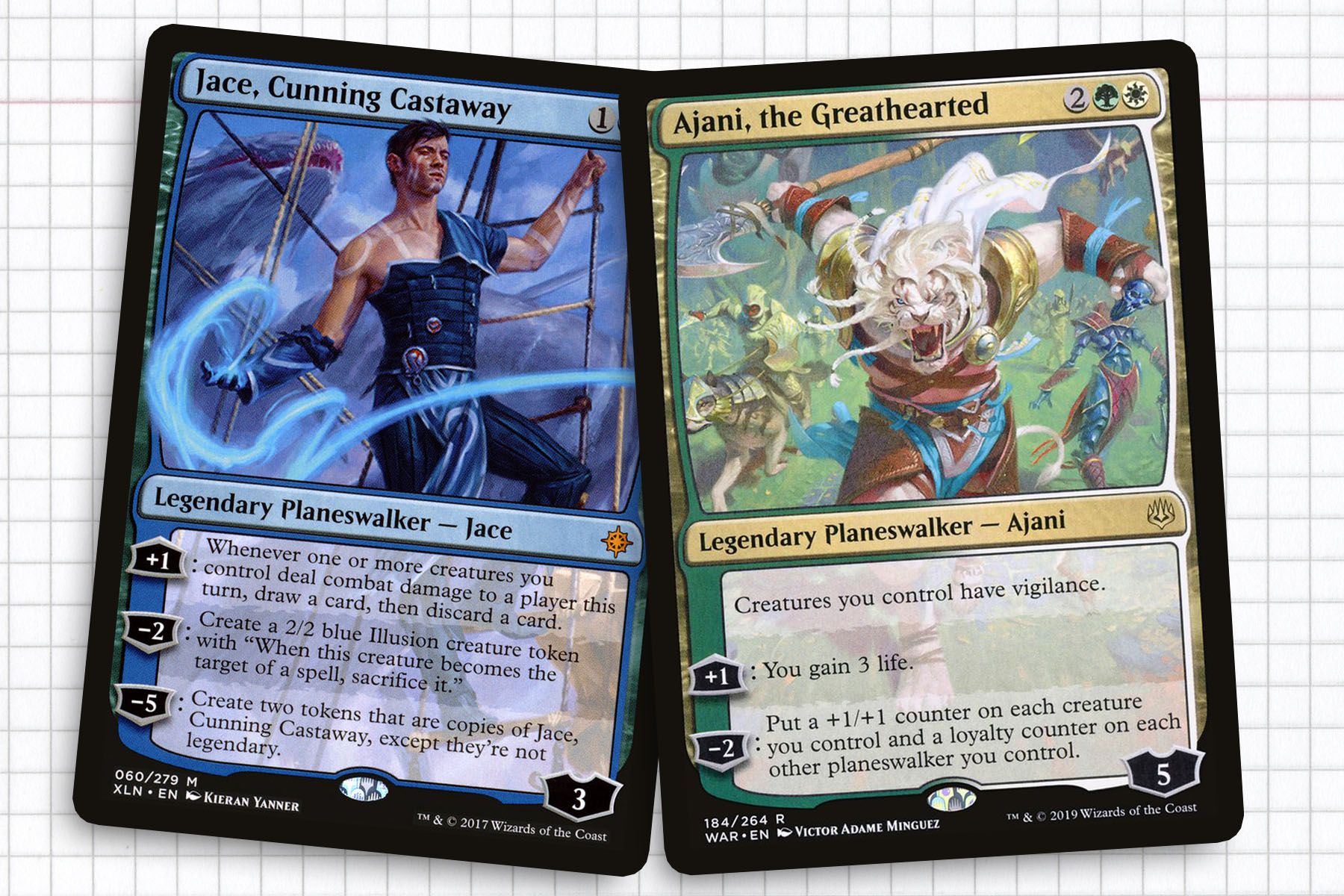
Subdued Super Friends
One of the key appeals I had to this deck was the Bant color identity. White and green are the creatures colors, but I also see the planeswalkers in these colors as crucial creature support. It should be no surprise that I like planeswalkers, but I have never found having a dozen in play, amassing value turn after turn to be compelling gameplay. As such, I see this deck housing in the range of a dozen planeswalkers max.
With the focus on creatures in this deck, planeswalkers that either make creature tokens or enhance our creatures are going to be valuable. Within our color identity, the character with the right power set for our deck is easily Ajani, who is traditionally helping to empower others—sometimes at the cost of his own wellbeing. I chose Ajani, the Greathearted and Ajani Unyielding for their ability to support our creatures/planeswalkers: finding us threats, granting some protection, or bolstering our whole team at the cost of Ajani’s loyalty.
Next, I included Elspeth, Sun’s Champion and Elspeth, Knight-Errant as two planeswalkers who build towards emblems that will greatly upgrade our creatures while populating our board with smaller tokens to keep us safe. Equally, Gideon, Ally of Zendikar advances our board either by generating tokens or by creating an emblem that upgrades our creatures with little to no set up. And while it will be a challenge to build towards, if we can ultimate Kiora, the Crashing Wave, we should be able to deflect other players’ interests in “spreading the damage.”
The smaller tweaks of any Commander deck can often do the most to find the personality of a deck. With the influx of new, untested planeswalkers, I predict the suite of planeswalkers will be my biggest focus going forward.
As I previously stated, this deck felt so weird when I laid it out and looked at all the components from the standpoint of my normal deck building philosophy. But I believe the connective tissue of the historic mechanic and how that drives card selection for this deck makes for something a lot more cohesive than it may look when examining each card in a vacuum.
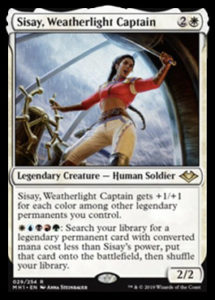
There is also the newly previewed Sisay, Weatherlight Captain, who invites players to turn the dial on their legendary permanents up to eleven. I don’t want to be pessimistic, because I believe there are good decks possible with Sisay, Weatherlight Captain at the helm. But she doesn’t interest me as much as I thought she would the first time I read through her rules text. Even with the obvious bonus of having a full color identity, I don’t feel she is as good her first incarnation and I feel most decks will operate on rails through most of their games. I’ve played decks like Zur the Enchanter before, and your first few tutored enchantments are by the books. I don’t find it compelling or fun. So the jury is still out on new Sisay for me.
Commander is such a wonderful format because it allows for different expressions of similar ideas. My hope is that by submitting deck ideas to the public that are outside of convention it will highlight the need for people to be empathetic to people that want to try new ideas without the intention of creating something fundamentally broken. Be good to each other and I’ll see you all next time.
Ryan Sainio is a Graphic Designer who writes about EDH and the EDH community. He has been playing Magic: The Gathering since 7th Edition in 2002 and values flavorful and fun gameplay over competitively optimized decks.

